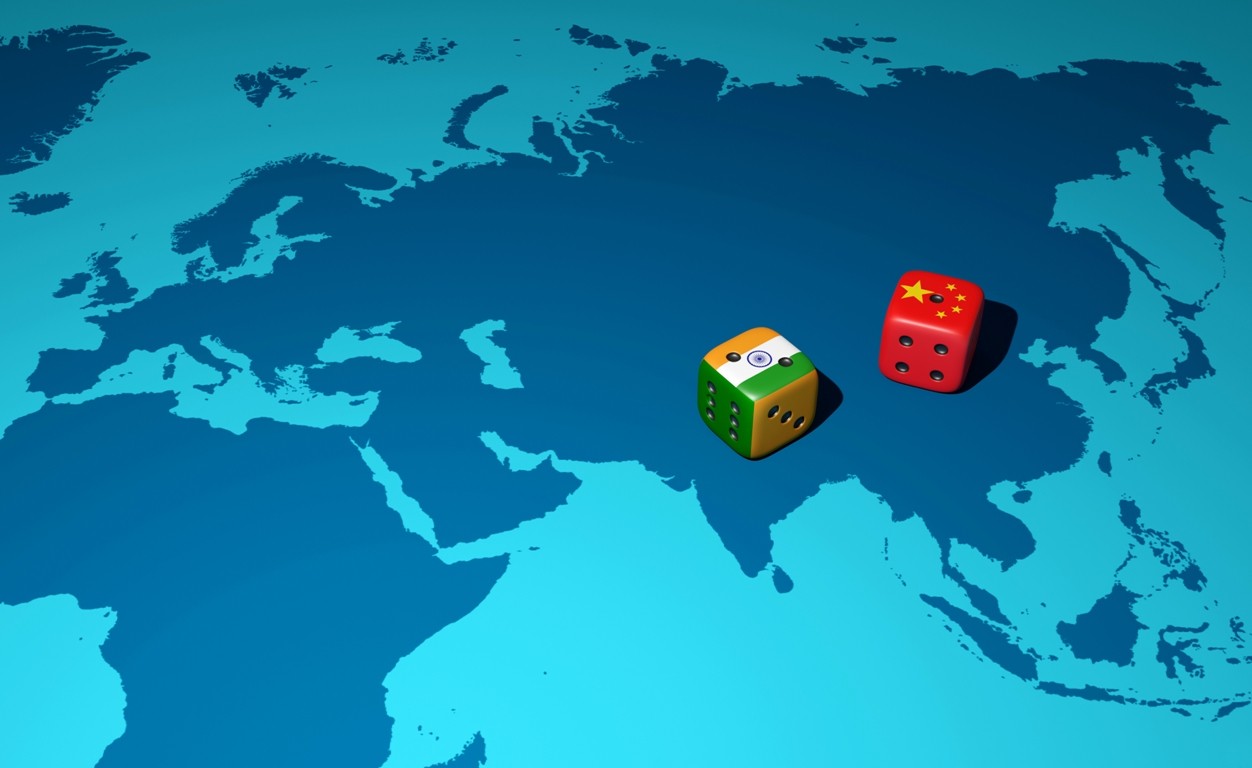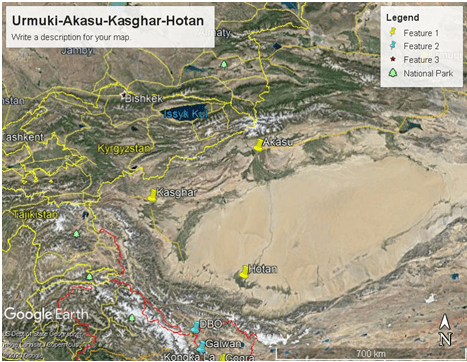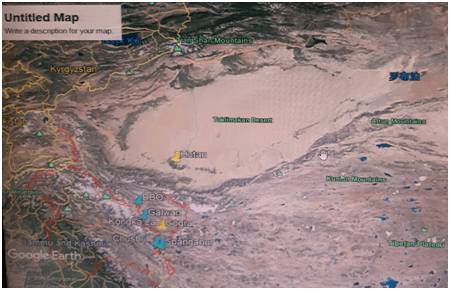To assess full PLA capabilities, even the PLA Air Force and PLA Strategic Rocket Forces capabilities needs to be reviewed to reach final assessments, writes Brig GB Reddy (Retd)
Understanding realities of People’s Liberation Army Force Levels, Capabilities and intent opposite Ladakh is critical to assess and determine likely ‘War Scenarios’ based on military strategies to conduct operations; and their intent in short, mid and long term contexts. To assess full PLA capabilities, even the PLA Air Force and PLA Strategic Rocket Forces capabilities needs to be reviewed to reach final assessments.
PLA military reforms started in 2015 transformed the Apex force structures. In particular, the Western Theater Command (WTC) was created responsible for the Indo-Tibet border (Ladakh to Arunachal Pradesh) by two Military Regions (MR) merger – Chengdu MR and the Lanzhou MR – and also for internal security in Tibet and Xinjiang.
Pre Reforms Status in 2017: Pre 2017, there were 2 MRs covering the present Western Theater Command: the Lanzhou MR; and the Chengdu MR. Post 2017, both MRs have been merged to form the WTC. The Xinjiang Military District functions directly placed under PLAA command. Most significantly, Post 2017, as per Chinese media reports, the Tibet Military Command/Military District has been elevated and placed under the PLA Army (PLAA).
Lanzhou MR Responsibility Force Level Pre 2017: Responsible for Ladakh besides Xinjiang operations and Kazakhstan border, consisted of the following formations:
- 21st Group Army: 61st Motorized Infantry Division; 12th Armored Brigade; Artillery Brigade; Air Defense Brigade; ‘Tiger’ Special Operations Dadui.
- 47th Group Army: 55th Motorized Infantry Brigade; 56th Motorized Infantry Brigade; 139th Mechanized Infantry Brigade; 9th Armored Brigade; 1st Artillery Brigade; Anti-Aircraft Brigade; Communications Regiment; and Engineer Regiment; 3rd Army Aviation Brigade. 12th Artillery Division was previously with 47th Group Army.
- Xinjiang Military District (HQ Urumqi): 4th Motorized Infantry Division (Kuqa); 6th Mechanized Infantry Division (Kashgar); 8th Motorized Infantry Division; 11th Motorized Infantry Division (Urumqi); Special Operations Brigade; 3rd Army Aviation Brigade; 2nd Artillery Brigade; Air Defense Brigade; 1st Independent Infantry Regiment; 9th Engineer Regiment; Signal Regiment; Electronic Warfare Regiment; 31st Chemical Defense Regiment.
- 63rd Armed Police Mobile Division (Pingliang) (formerly 21 Army 63 Division); and 7th Armed Police Mobile Division (formerly Xinjiang District 7th Division).
Lanzhou MR Force Levels Post Modernization 2017: 21 and 47 Army Army’s have been merged to form 76th Army Group with the Divisions/Brigades restructured as Combined Arms Brigades as given below:
- 76th Group Army (Xining City, Qinghai Province): 17th Heavy Combined-Arms Brigade; 56th Light Combined-Arms Brigade; 62nd Heavy Combined-Arms Brigade; 149th Medium Combined-Arms Brigade; 182nd Light Combined-Arms Brigade; 76th Special Operations Brigade; 76th Army Air Force Brigade; 76th Artillery Brigade; 76th Air Defense Brigade; 76th Brigade of Engineering Chemical Prevention; 76th Service Support Brigade.
- Xinjiang Military District (HQ Urumqi): 4th Motorized Infantry Division (Kuqa); 6th Mechanized Infantry Division (Kashgar); 8th Motorized Infantry Division; 11th Motorized Infantry Division (Urumqi); Special Operations Brigade; 3rd Army Aviation Brigade; 2nd Artillery Brigade; Air Defense Brigade; 1st Independent Infantry Regiment; 9th Engineer Regiment; Signal Regiment; Electronic Warfare Regiment; 31st Chemical Defense Regiment; and 363 BDR.
- 63rd Armed Police Mobile Division and 7th Armed Police Mobile Division.
Most important to note that the Infantry Divisions in the Xinjiang Military District have been modernized as Mechanized and Motorized Divisions as terrain favors mobile warfare.
As per US intelligence expert estimate, the total Ground Forces in the WTC includes: 76 & 77 Army Groups and additional forces – 90,000–120,000; Xinjiang Military District – 70,000; and Tibet Military District 40,000, that is, total 200,000–230,000.
5. Likely war scenarios: Nuclear War; Two Front Conventional War; Ladakh Front Conventional War jointly with or without Pakistan; Limited War to secure all disputed areas of LAC; and Joint Fire Strike Campaign (JFSC).
Nuclear war is ruled out in today’s context. So also, Two Front Conventional War is unlikely. Possibility is most likely for Limited War to secure all disputed areas of LAC and also JFSC campaign based on the recent border skirmishes in Eastern Ladakh and Doklam in 2017 and PLAs de-escalation/disengagement.
Most importantly, all WCT formations/units are trained to conduct offensive and defensive operations in isolated high-altitude areas with difficult terrain and weather conditions. PLA recognizes that ground combat will occur mainly along roads that normally follow valleys or ridges, limiting support and cooperation between forces operating on different axes. Lack of cross-terrain mobility limits the ability of ground forces to conduct penetrating or outflanking operations against enemy forces. The Stride, Joint Action and Firepower training focuses on movement long distances by multiple means to reinforce another region and engage in combat. Also, stress is on airmobile landings in the enemy rear areas.
At the Operational Art level, formations/units are trained to conduct limited Mountain Offensive Campaign or a JFSC. The JFSC is a long-range precision strike by long-range rocket, missile and air forces with the objective to destroy important enemy targets, paralyze the enemy’s operational system of systems, weaken the will to resist and destroy war potential, or create conditions for other operations. Conducting precision strikes against key Indian targets was preferable to conducting difficult offensive ground operations where the defender has an advantage. The JFSC would support border counterattack or mountain offensive, but could also represent an independent campaign.
Options opposite Ladakh: Review of terrain analysis (particularly Depsang Plains, Gogra Post area favours mechanized operations), grouping of forces and their training in the WTC automatically suggest various options available to include:
-
- JFSC either in Eastern Ladakh or Sikkim or Arunachal Pradesh separately or simultaneously by air, rocket forces and artillery as a punishment.
- Limited war either in Eastern Ladakh or Sikkim or Arunachal Pradesh separately or simultaneously with the JFSC operations.
- Full scale conventional war either in Eastern Ladakh or Sikkim or Arunachal Pradesh separately or simultaneously with the JFSC operations.
- Two Fronts War.
As per former Northern Army Commander, Lt. Gen. HS Panag, most likely operational-level objectives of the PLA in case of “limited war” may be as follows:
- Capture SSN Sector and threaten Indian defenses in Siachen Glacier.
- Cut off the Darbuk-Shyok-DBO Road at Galwan Valley — Shyok River junction to assist the offensive in SSN.
- Capture Chang Chenmo River Valley and all areas up to the north bank of Pangong Tso.
- Secure/capture the Kailash Range in Chushul Sector.
- Capture the Indus Valley up to the Ladakh Range via Demchok and Changla Pass on the Kailash Range and contact Indian defenses on the Ladakh Range.
- Pakistan is also likely to launch a complementary offensive in the Shyok River Valley in the Turtuk Sector.
Options: With one Mechanized Division, two Motorized Divisions, one Infantry Division, one Special Operations Brigade and other supporting formations integral to Southern Xinjiang Military Division, options at the operational level available include:
- Launch offensive on four thrust lines with one each Division or three thrust lines with one each Division keeping one Division in reserve directed to achieve the objectives identified above.
- Special Operations Brigade would be employed in air mobile role to secure key terrain features behind defensive positions.
- 76 Army Group formations/units, RRUs from other Army Groups and the PLA Air Force Air Borne Divisions may be employed as reserves/reinforcements as per operational requirements.
Choices: Most likely is resumption of PLA forays to occupy disputed areas as per their LAC claim lines at their choice of timing and places to include:
- Daulat Beg Oldi and Depsang Plains, Kongkar La, Gogra Post, PP 15, Hot Springs and PP 17 to secure complete Northern ridge line of Pangong Tso.
- Considering long lines of communications opposite Arunachal Pradesh and Sikkim (Nyingchi-Mainling-Yadong- Lhasa), PLA most likely conduct ‘feints and demonstrations” in the Eastern Theater.
- Graduated escalation by execution of JFSC against key Indian targets across the Indo-Tibet border in all sectors.
Thus, the ongoing “Talks” on de-escalation/disengagement is to be viewed as a temporary reprieve only in the context of Xi Jinping’s “Chinese Dream”. In today’s context, PLA has temporarily retracted. Xi Jinping’s ultimate intent or end objective is to address lessons of history: “barbarians encirclement”; “Century of humiliations”; and “accidents of history when colonial powers imposed unfair border treaties when China was weak”. The doctrine is “Extended Coercion and Creeping Incrementalism” or “Salami Slicing”.
It is grossly unfair on the part of the nation and the politic-bureaucratic decision makers to expect armed forces, particularly ground forces to deter and counter PLA adventures effectively on the Indo-Tibet borders, with their present force levels and weapons systems. Disengagement should not lull decision makers into complacency. They must equip the armed forces with the latest high-tech combat systems in adequate numbers to counter the PLA misadventures and give enough time to train with them.
Viewed in the above framework of China’s “Grand Strategy”, Force Levels and capabilities, Indian decision makers must exploit the peace interregnum to identify inadequacies in force levels and combat weapons systems post haste. Additional formations and combat weapon systems must be moved into depth areas not only in the Ladakh Theater but also in both the Central and Easter theaters. Prime Minister Narendra Modi and Defence Minister Rajnath Singh must also visit key locations in the Central and Eastern Theaters.










